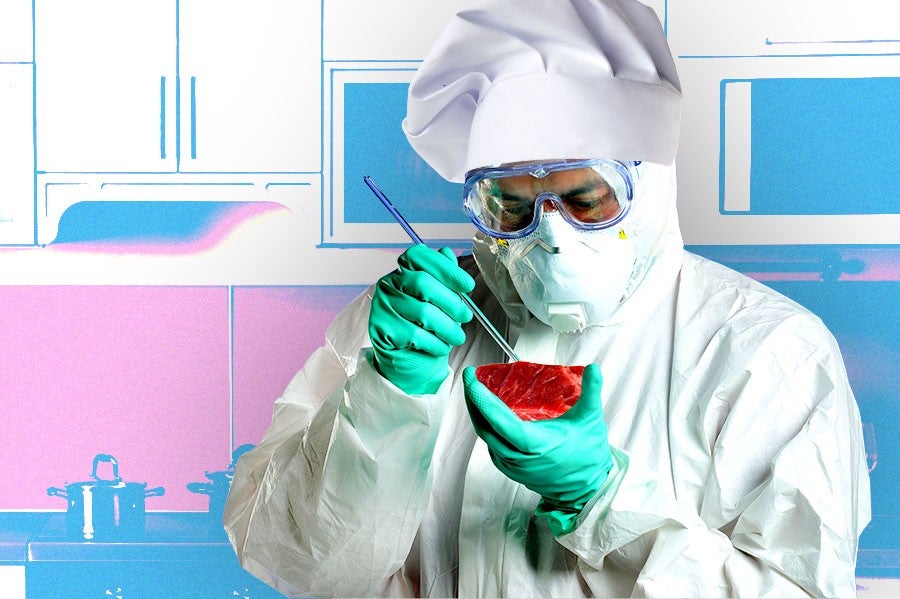Serve someone a bucket of fried chicken and they’ll gleefully gnaw on the bones. Serve someone a bucket of raw chicken, and they’ll vomit on your shoes.
Needless to say, many of us have an aversion to raw meat, which isn’t unwarranted: Uncooked flesh is riddled with organisms that can cause hellish food-borne illnesses (E. coli, salmonella, listeria, to name a few). In fact, a 2014 inspection by Consumer Reports found that 97 percent of chicken breasts sold at U.S. grocery stores were tainted with harmful bacteria capable of making you violently ill if you don’t cook it properly.
Unsurprisingly then, food-borne illnesses associated with raw animal products are commonplace: England experienced a “salmonella epidemic of considerable proportions” linked to undercooked eggs in the 1980s, which resulted in the slaughter of four million hens and the destruction of 400 million eggs. Today, the Centers for Disease Control and Prevention estimate that salmonella causes 1.2 million illnesses, 23,000 hospitalizations and 450 deaths in the U.S. every year.
But food poisoning aside, why are we repulsed by even the idea of raw meat (sushi and sashimi aside), when we happily gorge ourselves on the cooked stuff? Dana Hunnes, senior dietitian at the Ronald Reagan UCLA Medical Center, has a few reasonable theories. “The color of raw meat (blood red mixed with white marbling) is a little ‘too close to home’ and reminds us of our own muscles,” Hunnes hypothesizes. “Once the meat has been cooked, it’s easier for us to disassociate the food from where it came from — a live animal — because we can’t see those muscle fibers and fats anymore.”
The smell of raw, unseasoned meat is also offputting. “Raw meat tends to have an unappealing smell,” Hunnes says. “Once it’s cooked, it has that ‘meaty’ charred smell — a result of the Maillard reaction (when amino acids and glucose molecules are cooked) — which makes some people happy.” Then of course, there’s the intensely unappealing texture of raw meat (*gags*). “The texture is decidedly more ‘chewy’ than cooked meat,” Hunnes emphasizes (*dry heaves*). “When the meat is cooked, the proteins are denatured and easier to chew, unless it’s overcooked and dry.”
Still, some strong-bellied folk have overcome their fear of raw meat, resulting in several restaurants scattered across the U.S. and Japan serving chicken sashimi, sushi and tartare — all of which are more or less served raw — according to Food & Wine. Chicken sashimi is typically prepared by boiling or searing the meat for no longer than 10 seconds, which — as you might have guessed — is nowhere near long enough to kill the harmful bacteria that may linger within.
Why someone would choose to eat (or serve) chicken sashimi over cooked chicken isn’t exactly clear, either. Travel blogger Kevin Revolinski was less than impressed with the dish, which he tried during a trip to Japan: “It was almost anticlimactic [sic],” he writes. “It is tender and has the texture of tuna without the hint of fish. Very mild and the sauce and ginger make it tastier.”
Welp, hope the food poisoning was worth it, then…

